Ticks are parasites that exclusively consume blood. Encountering ticks in California is worrying because the most common tick-borne disease in the state is Lyme disease. Rocky Mountain spotted fever is thankfully not a problem in California.
There are 48 types of ticks in California. There are also more than 13 known tick-transmitted pathogens in the United States, so awareness of ticks is a matter of personal health. Most of the ticks on our list are of medical importance in the Golden State.
Where do ticks live? What are 9 of the ticks in California that you need information about? We’ll take a look at some details and pictures now.
9 Ticks in California
These are 9 of the ticks you’ll encounter in California:
- Pajahuello Tick
- Pacific Coast Tick
- American Dog Tick
- Western Black-legged Tick
- Spinose Ear Tick
- Brown Dog Tick
- Rocky Mountain Wood Tick
- Poultry Tick
- Winter Tick
1. Pajahuello Tick
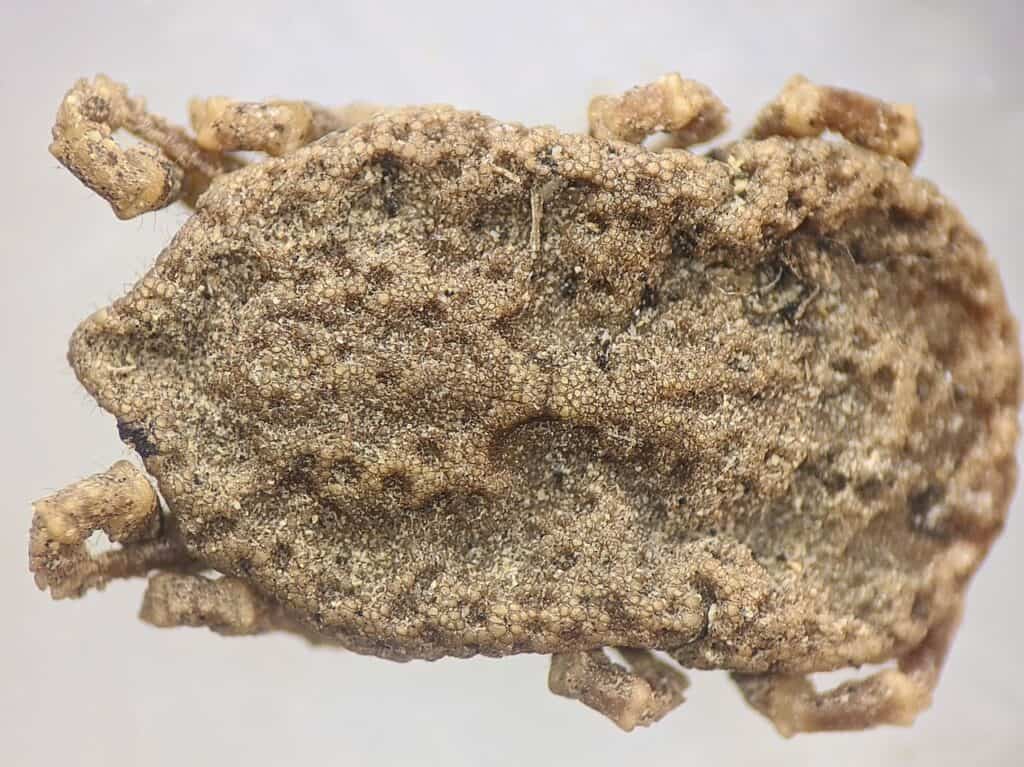
Pajahuello ticks are found from Humboldt County down to San Diego.
©Freddiepinkgill / Creative Commons – License
The Pajahuello tick is a soft tick that likes the foothills and mountains. You can encounter them from Humboldt County down to San Diego.
These ticks are a nuisance and they frequently bite anyone hanging around outside. They congregate where big mammals rest and readily bite humans that are out hunting or hiking if they traverse one of these spots.
This tick bite doesn’t go unnoticed. It’s known for being painful and causing alarming irritation around the bite site. This is because the tick releases a toxin when it’s biting.
2. Pacific Coast Tick
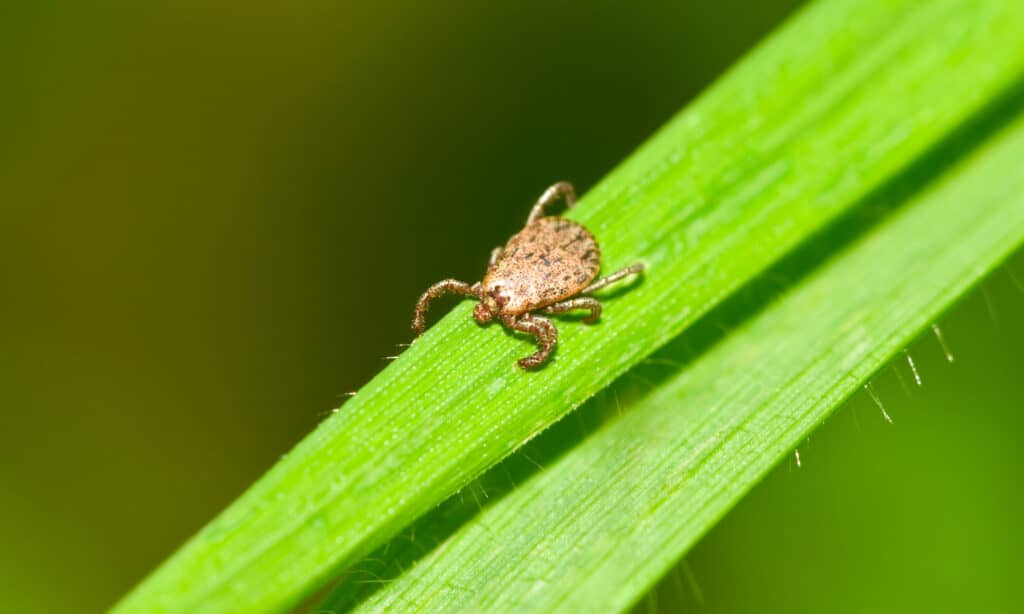
Almost all parts of the state that aren’t arid play host to the Pacific coast tick.
©South12th Photography/Shutterstock.com
This is one of the most common of our 9 ticks in California. Before adulthood, it feeds primarily on squirrels and then moves on to humans, deer, cattle, and horses as an adult.
The only place in the state that doesn’t host Pacific coast ticks is the dry regions of the Central Valley and the southeastern desert near Los Angeles.
The Pacific coast tick is the main vector for Pacific Coast tick fever which is a major cause for concern. This disease is milder than Rocky Mountain spotted fever, but it’s still a painful experience. Symptoms of Pacific Coast tick fever include headaches, fever, and localized necrosis at the bite site.
3. American Dog Tick

American dog ticks are easy to pick up while hiking around the Golden State.
©iStock.com/nechaev-kon
This tick is the primary vector of Rocky Mountain spotted fever. It also transmits tularemia and causes tick paralysis in dogs. The American dog tick is present throughout California but is most densely populated along the entirety of the Coastal Range.
It likes to feed on dogs, raccoons, humans, and other larger mammals. These ticks aren’t a fan of forests and stick to fields and shrubby areas. They’re easy to pick up along hiking trails especially if your animal wanders off of the path.
4. Western Black-Legged Tick
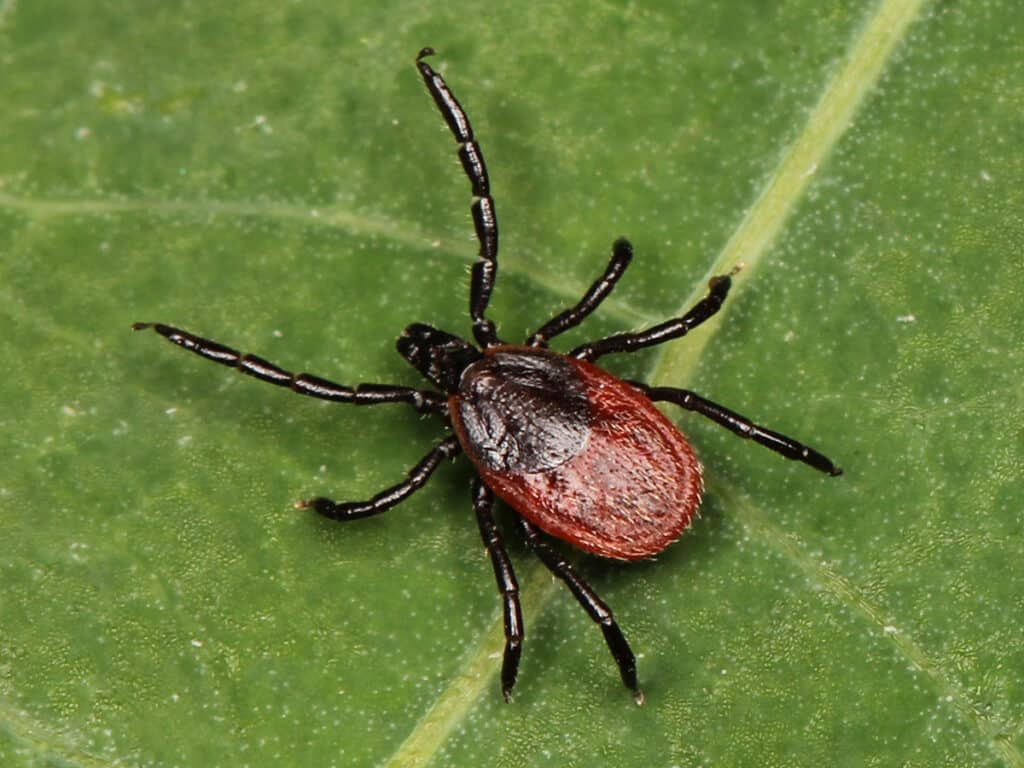
The western black-legged tick is most popular in California.
©Kaldari / Creative Commons – License
The belief is that this tick is a vector of Lyme disease in California which makes it one of the most important of our 9 ticks. It’s a common tick, especially in Northern California. It’s also responsible for the transmission of tick paralysis in dogs.
It prefers damp environments so it’s only found in certain spots in the mountains and foothills. Its saliva is toxic to humans, so bites from western black-legged ticks are painful.
5. Spinose Ear Tick
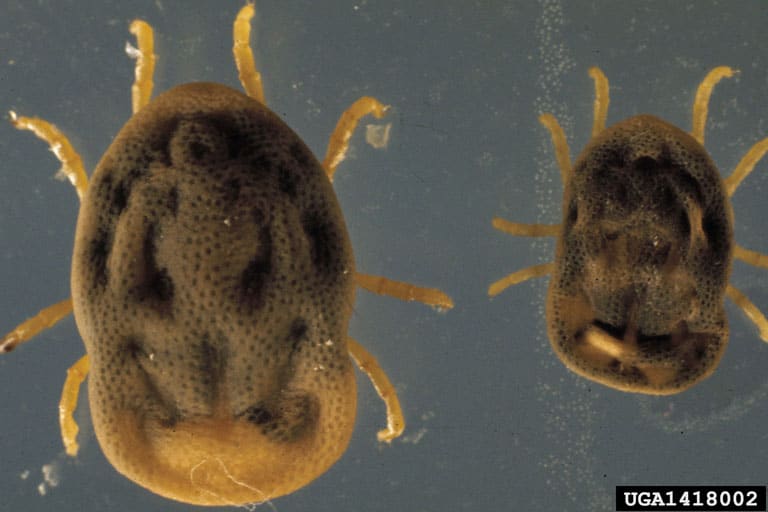
The spinose ear tick makes a home in and around the ears of its host.
©Mat Pound-USDA Agricultural Research Service Country-United States / Creative Commons – License
Spinose ear ticks are common among horses and other livestock in California. They like the Central Valley and Southern California since they prefer dry and warm conditions. They’re a big problem in Imperial Valley where calves die of tick fever.
They get their name because they prefer to infest ears both internally and externally. This is extremely irritating for animals and causes exhaustion, emaciation, deafness, and death. Female spinose ear ticks can go 355 days without food in a laboratory environment.
They usually don’t seek out other animals like cats, dogs, and humans. However, there are reported cases of humans finding spinose ear ticks in their ears.
6. Brown Dog Tick
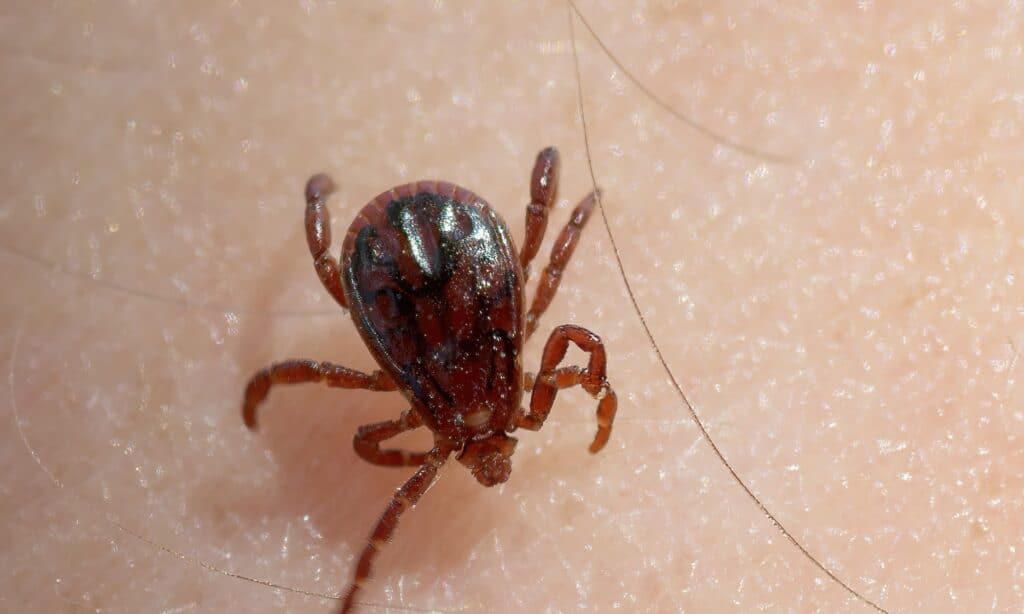
Brown dog ticks primarily feed on the dogs of California.
©iStock.com/RobertAx
Also called kennel ticks, brown dog ticks love to live in dog kennels. They’re almost always found near dogs and kennels in California. They like the crevices and cracks of wooden structures. Brown dog ticks especially like bedding and clutter both inside and outside.
They will go after humans, cats, and other mammals that hang out with or near dogs.
7. Rocky Mountain Wood Tick

Rocky Mountain wood ticks aren’t much of a concern in the Golden State.
©South12th Photography/Shutterstock.com
These ticks feed on rodents before adulthood and then switch to larger mammals as an adult. Their primary hosts are deer, livestock, dogs, coyotes, and humans.
Because of its propensity to feed on rodents before it bites humans, it’s an important vector in the spread of Rocky Mountain spotted fever, tularemia, and the Colorado tick fever virus. Its bites also cause tick paralysis.
While it’s a dangerous tick that’s feared elsewhere in the United States, it isn’t of much concern to Californians because it is found in more remote areas. It hangs out along the northeastern Sierra Nevadas up to Modoc County.
8. Poultry Tick
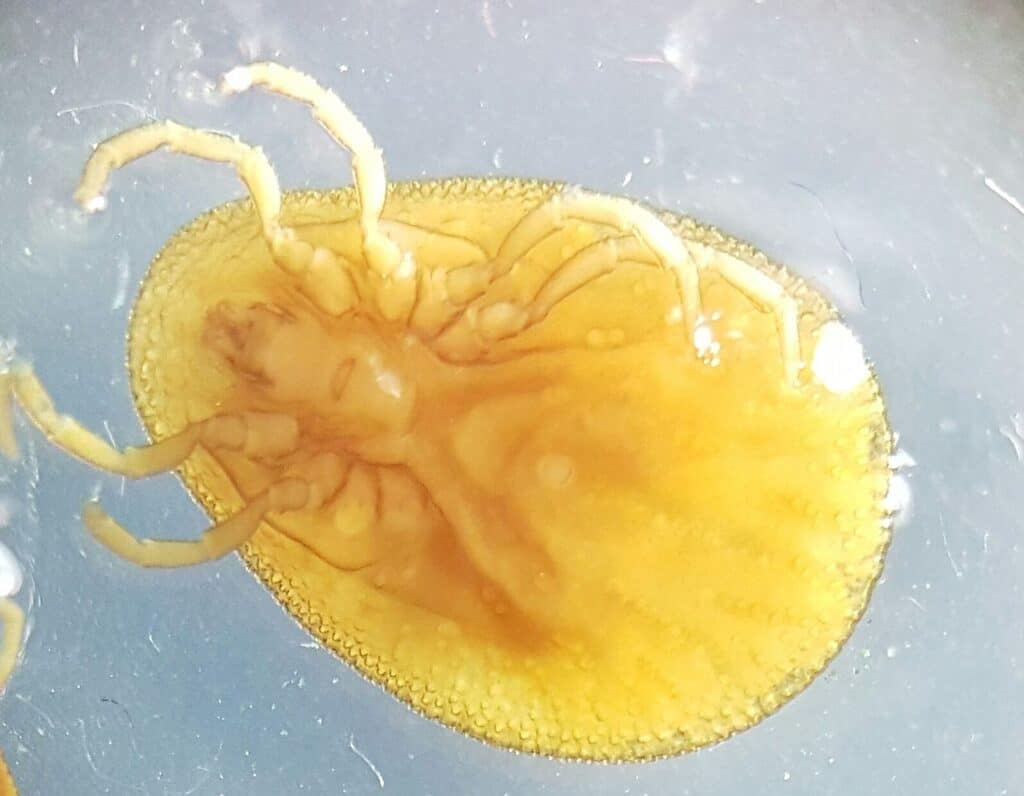
Poultry ticks feed on chickens that are kept in wooden coops.
©Navid.drogba / Creative Commons – License
These ticks bother turkeys and chickens but are usually easily contained except the coop is made of porous wood. Ticks lay their eggs in the crevices provided in a wooden structure. They can survive in these structures without them being occupied for years.
Poultry ticks hide during the day and feed at night. They’re found from Kern County up to Shasta in the Central Valley as well as in dry coastal regions like the Inland Empire of Southern California.
9. Winter Tick
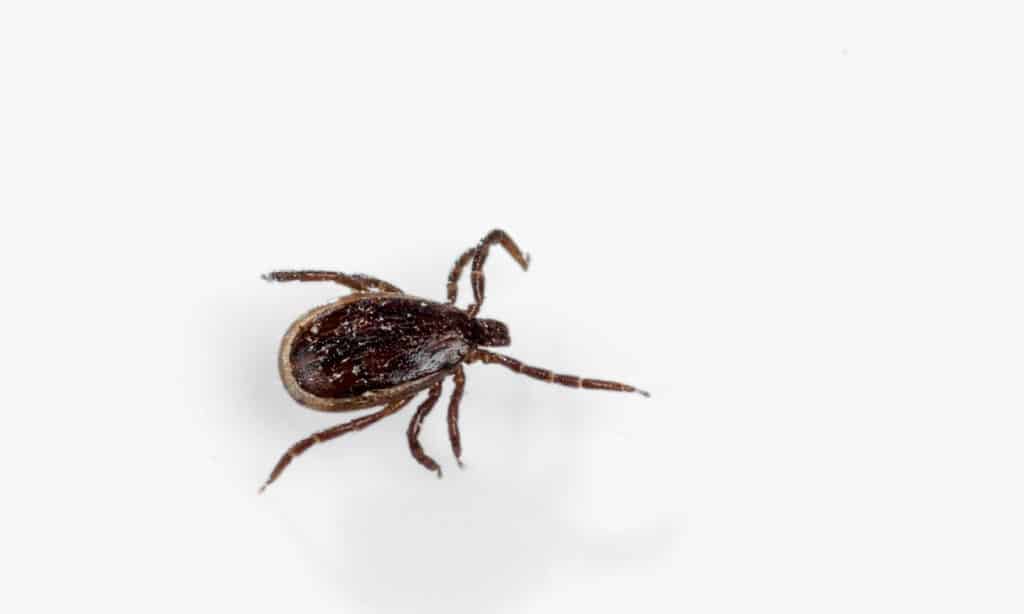
Winter ticks are concentrated in the foothills of California.
©iStock.com/VladK213
This tick is found throughout the state though, like some of the other 9 ticks in California on our list, it’s concentrated in the foothills. It can also be found along the Central Coast.
It likes to feast on deer and horses. Winter ticks are most active in California from fall through spring. They’re large after they’ve eaten and are easily spotted. They swell up to about a ½ inch in size.
Because this tick only takes one host throughout its entire life, it isn’t one of the ticks on our list that is a cause for concern regarding disease transmission.
The photo featured at the top of this post is © Steven Ellingson/Shutterstock.com
Thank you for reading! Have some feedback for us? Contact the AZ Animals editorial team.






